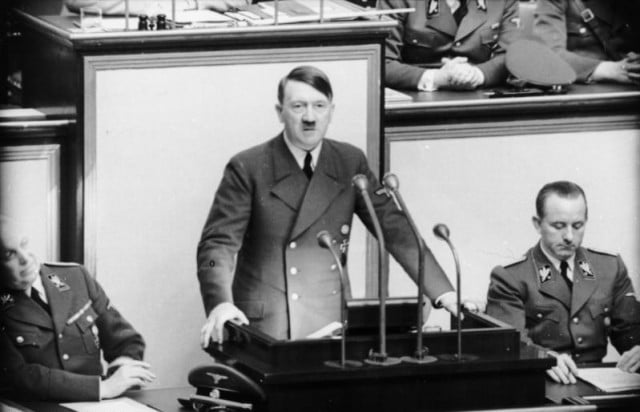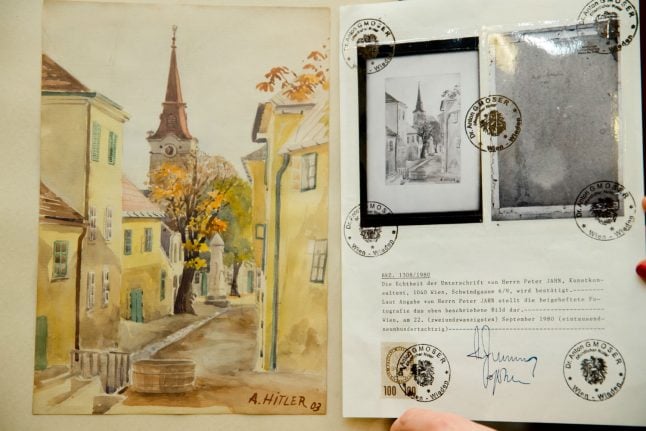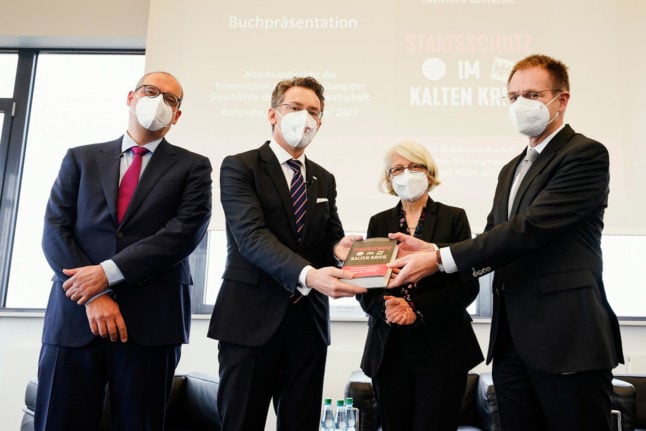The pictures — from watercolours of pastoral scenes to sketches of female nudes — will be sold at the German city's Weidler auction house, according to its website, which includes the listing of an Adolf Hitler “special auction” at the end of its sales catalogue.
SEE ALSO: Why German police have seized 'fake' Hitler watercolours
The works include pictures either “signed or monogrammed by A. Hitler” and other furnishings, it said. They are in a variety of styles and mediums.
“The items come from Austrian or rather European private ownership, originally from famous artists of the 3rd Reich, from heirs or from the estates of collectors,” the catalogue says.
According to a report on the sale in the local Nurnberger Nachrichten newspaper the starting prices vary from €130 euros for a charcoal sketch, “Weinberg Monastery”, to €45,000 for a watercolour entitled “Ortschaft an Vorgebirgssee”, a scene of a village near a mountain lake.
SEE ALSO: What it's like to share a name with the world's most notorious dictator
The Nazi dictator, who committed some of the worst crimes in history, tried to enrol in the Vienna Academy of Arts twice as a young man but was rejected for lack of talent.
 Hitler in the Reichstag on May 4th, 1941. Photo: Deutsches Bundesarchiv/WikiCommons
Hitler in the Reichstag on May 4th, 1941. Photo: Deutsches Bundesarchiv/WikiCommons
He continued painting, however, and copied landscapes from post cards which he sold to tourists.
The Nuremburg sale comes just two weeks after German police seized three watercolours presented as Hitler's works before they were due for auction in Berlin, claiming they were fakes. The Alpine and Rhenish landscapes were dated 1910 and 1911 and were signed A. Hitler and were offered by auction house Kloss.
As The Local reported, doubts were raised over if the signatures on the painting matched Hitler's handwriting at the time. It's also thought several 'fakes' were produced with the dictator's signature when he became a prominent dictator.
A 2015 auction of Hitler watercolours in Nuremberg fetched nearly €400,000. A painting of Neuschwanstein Castle in Bavaria fetched the highest price in the lot, selling for €100,000.
SEE ALSO: Hitlers artwork under the hammer in Nuremberg
In Germany it is legal to sell paintings by Hitler so long as they do not contain Nazi symbols.



 Please whitelist us to continue reading.
Please whitelist us to continue reading.
Member comments